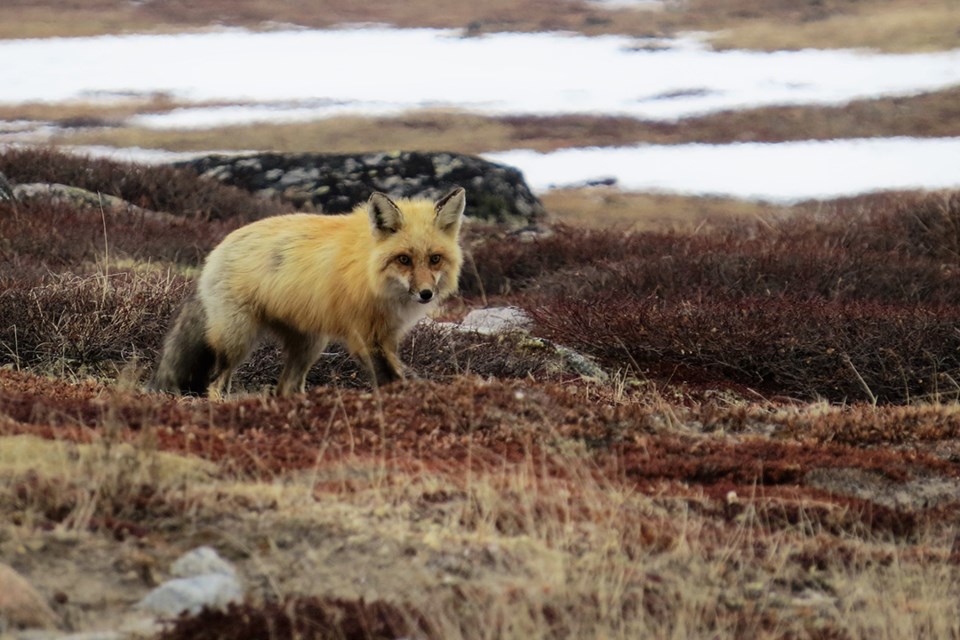SASKATOON — A combination of ecological and biological methods in studying wildlife helped University of Saskatchewan (USask) researchers track a parasite dangerous to humans.
USask take a closer look at this One Health Signature Area of Research project.
Northern Canadian communities are beautiful to behold, with gorgeous landscapes and a plethora of wild animals roaming freely throughout the vast and complex ecosystem.
Nestled quietly within that ecosystem lives a cute little animal that may hold the key to solving a serious health concern for people living in the North.
The parasite Toxoplasma gondii (T. gondii), more colloquially known as the parasite associated with kitty litter, is found in humans in Northern communities at a disproportionately high rate. The reason for the high exposure rates of T. gondii in the North has long been a mystery, but researchers from the University of Saskatchewan (USask) believe they’ve found a critical answer by examining not humans, but foxes.
“Foxes are a good indicator species for how much a parasite is circulating in the environment because they eat a lot of meat, they scavenge a lot of meat,” said Dr. Emily Jenkins (PhD), a professor from the Department of Veterinary Microbiology in the Western College of Veterinary Medicine (WCVM) at USask and a co-lead of the One Health Signature Area of Research. “They can be exposed through similar roots to how people can be exposed.”
Research spearheaded by Jenkins’ then-PhD student Dr. Émilie Bouchard (PhD) and published in highlights a heightened presence of T. gondii in foxes in the Nunavik region of northern Quebec. Nunavik, as Jenkins puts it, has the highest human exposure rate of the parasite of anywhere in Canada.
The T. gondii parasite can cause toxoplasmosis – a parasitic disease that can cause flulike symptoms in most cases but is particularly dangerous and potentially fatal for fetuses and immunocompromised individuals. The mystery was how a parasite commonly transmitted by felines was so prevalent above the tree line in remote Arctic ecosystems.
Bouchard, now a wildlife health specialist for Environment and Climate Change Canada, used foxes as a “sentinel species,” a particular animal used to identify health threats in an ecosystem before they extend to humans or other animals. Through the analysis of stable isotopes in the tissue of foxes infected with the parasite, the researchers could compare the diet of the infected foxes with that of humans – and thus the most likely vectors for infection.
What surprised researchers, Bouchard said, was determining fish and waterfowl as the common vector for T. gondii instead of mammals.
“When I saw that our results from stable isotopes were consistent with recent reports that marine prey and migratory birds are linked to human exposure to T. gondii in Nunavik, same as with our foxes, that was quite rewarding. It made the whole story complete in a sense,” she said.
By identifying those vectors for the parasite, Bouchard said that information could be used to make changes to mitigate the parasite’s threat to humans and other species in Nunavik and other Arctic regions.
“(This research) reveals a better understanding of the distribution and introduction of T. gondii in fragile Arctic ecosystems,” she said. “Ultimately, these findings could inform future risk assessments to determine the potential human and animal health risks associated with T. gondii in northern ecosystems.”
Jenkins lauded Bouchard for the interconnected and interdisciplinary nature of this research. The idea to use stable isotope analysis came from a collaboration between Bouchard and another PhD student at Laval University, and finding links between the diets of animals and human health risks displays what Jenkins calls the power of the One Health Signature Area of Research for solving complex health problems.
“Human studies are imperfect, like human memory is imperfect ... and the stable isotope work doesn’t lie – the traces of compounds in the fur and tissue of these foxes are not relying on the fox telling us what it ate,” Jenkins said. “What was so surprising was that Émilie’s fox studies, the exposure we saw in foxes, really almost perfectly paralleled the levels of human exposure other researchers were measuring at the same time.”
Bouchard said her experience in Northern communities – sharing her knowledge and having local knowledge shared with her in turn – was one of the highlights of her fieldwork. By working in the community, Bouchard said she was able to develop trust and partnerships as she facilitated knowledge transfer with her research.
This research project helped to create a better awareness and understanding of food-borne parasites in Northern communities, and Bouchard said she hopes this work will help the health of those communities while taking into account the cultural and economic aspects of the local diet.
“If my work helped – even only a little – break down silos between researchers and communities and lead to more culturally sensitive and better collaborative research, that would be the coolest part, without a doubt,” she said.
— Submitted by USask Media Relations




